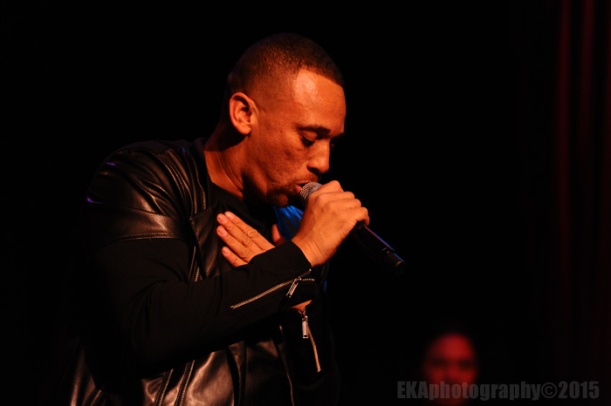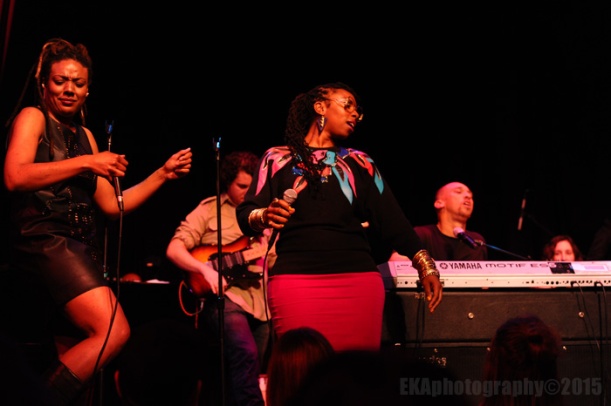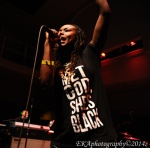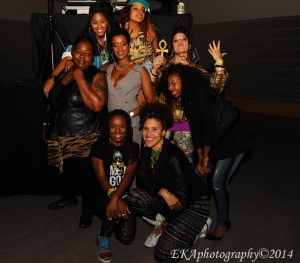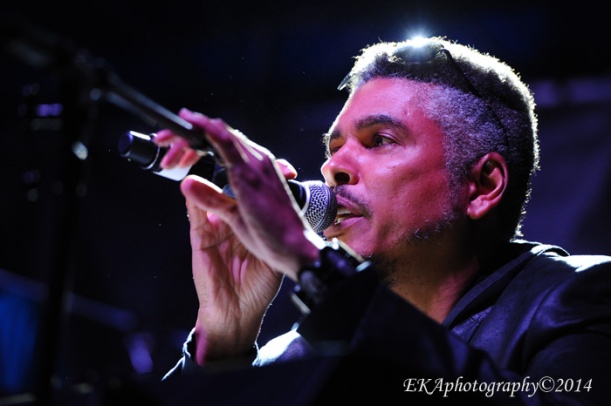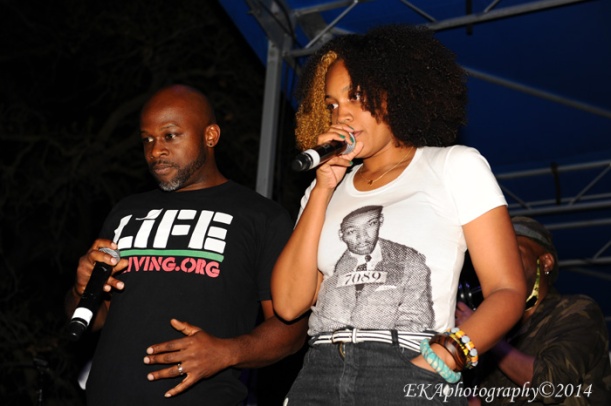
Over the years, Oakland’s annual Art & Soul festival has had its ups and downs. This year’s offering, however, was one of the best in recent memory, with an outstanding all-local lineup which allowed homegrown talent to shine. It’s perhaps easy to take the event for granted, with its familiar array of vendor booths and food stands, bolstered by various stages for live music and dance. It’s not the edgiest summer event, but it is one of the most multi-generational, as well as one of the most venerable festivals in Oakland. While First Fridays, Friday Nights at OMCA, and Third Thursdays at Latham Square have become popular in recent years, when Art & Soul started, there wasn’t really much of a buzz around downtown as a cultural district. All that has changed as Oakland has come into its own and become more of a destination for the rest of the Bay Area.
It seemed fitting that this year’s highlight was a Sunday headlining set by hometown heroines the Pointer Sisters. The group is best known for a string of 80’s pop hits like “Jump,” “Neutron Dance,” “Automatic,” and “I’m So Excited,” but they started out a decade earlier with an intoxicating blend of vocal harmonies and versatile arrangements which ran the gamut from R&B to funk to jazz to country to rock to disco. It would have been cool to hear deep cuts like “Yes We Can Can,” “How Long,” and “Steam Heat,” but the hour-long set concentrated on their best-known material, with a cover of Aretha Franklin’s “Chain of Fools” thrown in for good measure. While the group is down to one original member—Ruth Pointer—it’s still a family affair, with the rest of the trio rounding out with Ruth’s daughter Issa and granddaughter Sadako. Now in her 70s, Ruth looked and sounded amazing, and she led the group through a dynamic live set which had the crowd buzzing.
At the end of the show, there was a special cheerleading performance and an appearance by Mayor Schaaf, who then announced the ”Mayor of West Oakland,” Councilmember Lynette McElhaney, who proceeded to award Ruth the key to the city. Ruth then gave a small speech bigging up the city, and shouting-out her high school, McClymonds. It was a real Oakland moment.
Earlier in the day, the main stage featured sets by Grammy-nominated Alphabet Rockers, R&B songstress Netta Brielle, and jazz-hopsters the Kev Choice Ensemble – a strong showing of local flavor whose sets complimented each other well. The music was in the vein of Black music, but had near-universal appeal. This was a marked change from past years which sometimes featured non-local rock acts (which may have been due to former sponsor KFOG). But this year, the co-sponsor was KBLX. As a result, the main stage performances felt more organically and authentically Oakland. While the festival hasn’t always booked all-local lineups, it’s a good look when it does. That’s because doing so allows the event to really be about celebrating and appreciating The Town—in effect, marketing Oakland itself as the main attraction.
It doesn’t hurt that there is plenty of talent bred right here to go around. The Kev Choice Ensemble is a perfect example. If you’ve never seen the KCE live before, you’re missing out on some really good music, as in, actual music played by real musicians. In terms of artistic sensibilities, Choice is a 10 out of 10, and his music bears a high level of aesthetic quality. The mix of jazz, funk, R&B, and hip-hop felt perfect to groove to on a Sunday afternoon. Lyrically, Choice eschews the materialism and self-serving braggadocio common with contemporary rap artists, focusing instead on socially-conscious messages, augmented by the backing vocals of Viveca Hawkins. Choice brought out special guests Sol Development, Netta Brielle, and Jennifer Johns—even more top-shelf local talent—which made the concert seem like an extended family affair.
The previous day, Oakulture managed to catch sets by Jazz Mafia featuring Deuce Eclipse , Ryan Nicole and Martin Luther, and headliner Lyrics Born. Both sets were super-tight. Luther absolutely killed covers of Parliament’s “Stay,” and The Beatles’ “While My Guitar Gently Weeps,” and Eclipse ripped dos rap en Espanol numbers, “Ragga Cantor” and “Knock Knock,” which allowed the Mafia to show of their Latin jazz chops
Lyrics Born, meanwhile, continues to put on a hell of a live show. Now on his 10th album, the man has lots of catalog to pull from. Too much, in fact, for a one-hour set. Oakulture was hoping LB would pull out the 2003 gem “Bad Dreams,” but really couldn’t complain about material like “I Like It, I Love It,” “Chest Wide Open,” and the just-released single “Is It Worth It?” The crowd also heard the Latyrx classic “Lady Don’t Tek No,” which never gets old. Another highlight were the b-boy breaking moves of LB’s son, Teo—reppping the next generation of Bay flavor.
There was, as always, a lot going on at Art & Soul. In addition to the main stage, there were dedicated jazz and blues stages, and a turf dance competition. It’s pretty cool that turfin’ has become enshrined into the festival repertoire, as something which primarily appeals to youth. It’s also cool that hip-hop artists are being embraced—almost a decade after Hieroglyphics became the first rap act to play the festival. While rap isn’t always the most appropriate music choice at family-oriented events, rappers with positive lyrical content who play with live bands makes it a non-issue.
All in all, Art & Soul was an enjoyable and fun time which one hopes will continue to evolve into a world-class showcase for local music. There was also an underlying sense of the need to maintain cultural identity in the face of a rapidly-changing city. One of Choice’s songs, “Never Give You Up”—which personifies Oakland similar to how Common’s “I Used to Love H.E.R.” personifies hip-hop—spoke directly to that. The song was later referenced by McElhaney. With that being said, having a place where Black cultural forms such as blues, jazz, hip-hop and turfin’ are all visible and audible, where food stands still sell BBQ, and local vendors sell t-shirts with slogans like “I (Heart) Being Black” reinforces Oakland’s longstanding identity against the onslaught of culture and population shift. Perhaps that makes Art & Soul the cultural equivalent of comfort food, but comfort food is comforting for a reason.



